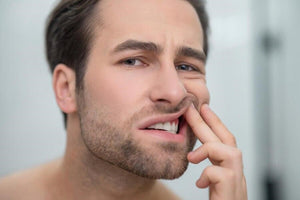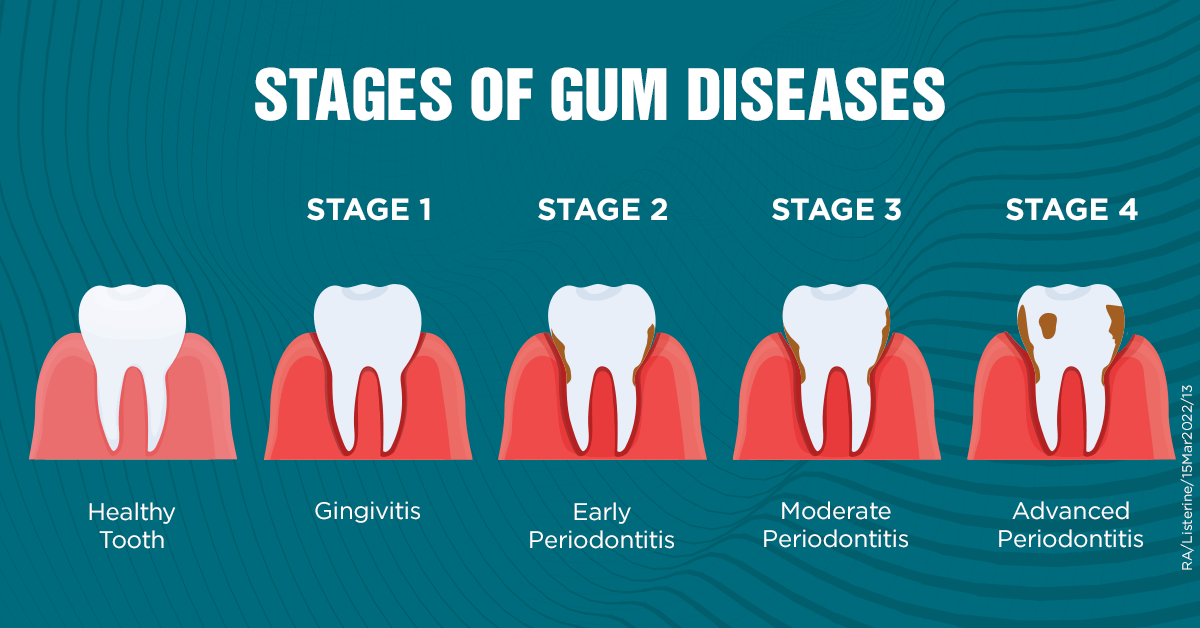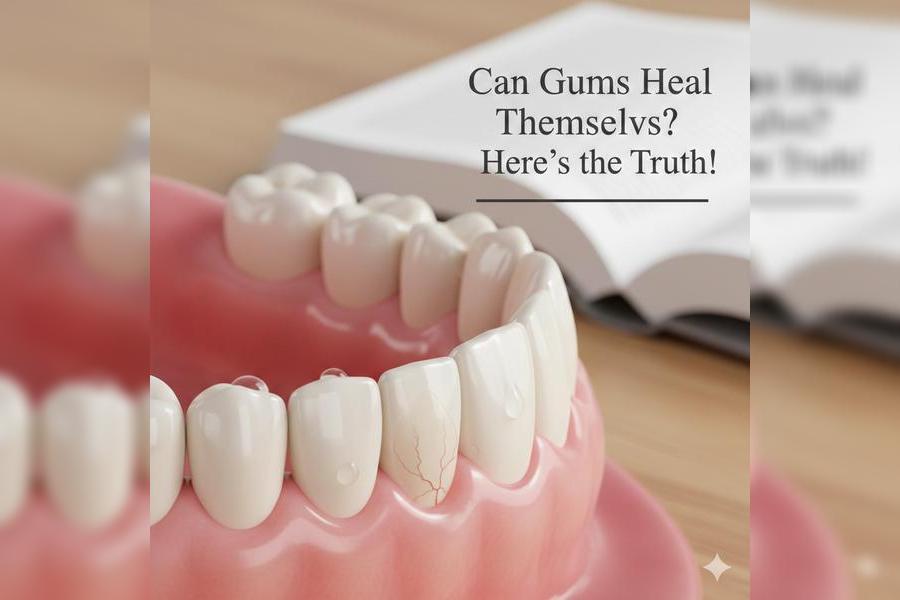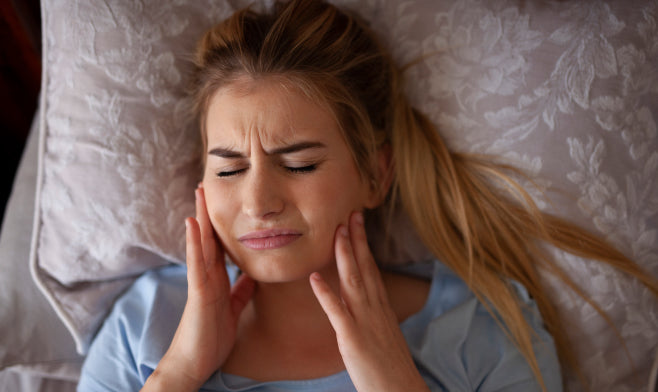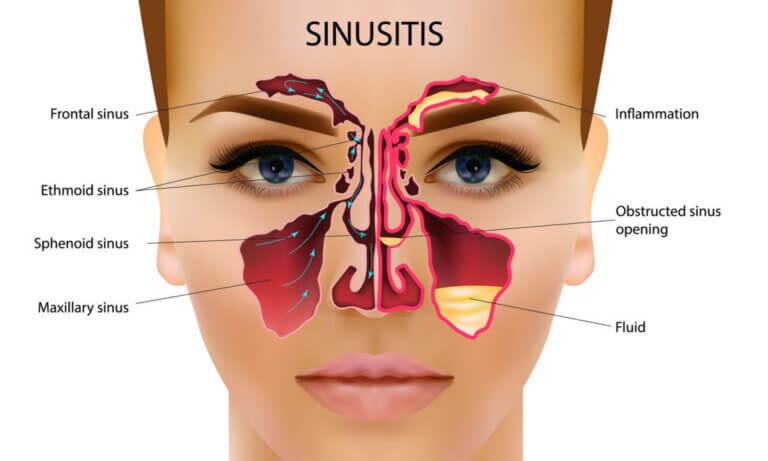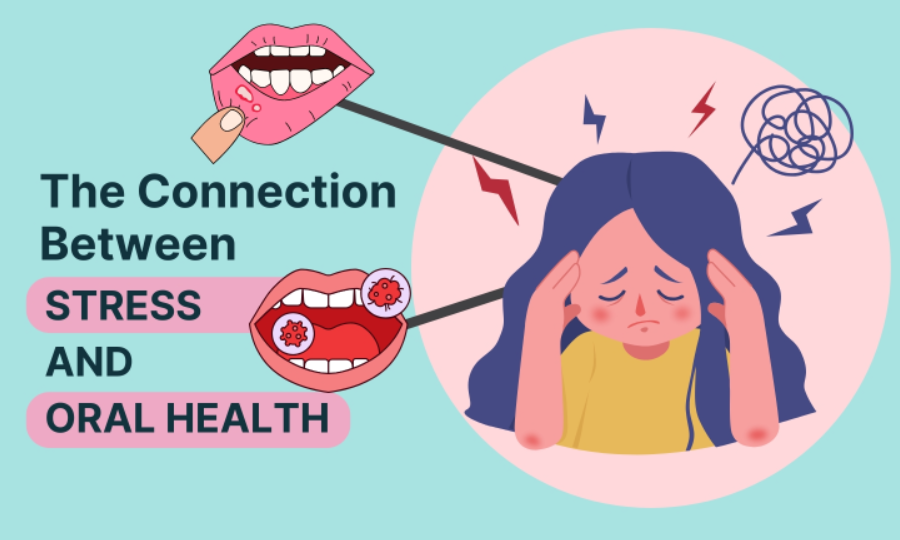Whenever we hear of gum disease, our minds usually tend to think of an old age patient or your grandparents other than a healthy person in his or her twenties. However, the fact remains that: gum disease does and can afflict people in their 20s. In fact, the question “how common is gum disease in 20s” is a serious one because it serves as a wake-up call for anyone who is neglecting oral hygiene at a younger age.
Although genetics or lifestyle and diet may play a part, the reality is that gum problems can creep up on you much sooner than you think. You may have already experienced some evidence of bleeding during brushing, sometimes swelling of gums, or a foul breath which even the strongest mint-flavored toothpaste will not help to improve.
The silver lining is that gum disease at this stage in life is usually reversible when properly treated, and it is immensely less problematic (and inexpensive) to prevent than it is to repair. In this article, we will take a closer look at “Just how common is gum disease in your 20s?”, where it comes from, what to look out for, and what to exactly do to defend oneself.
We’ll also share one natural product that’s making waves for stopping gum issues in their tracks. So, keep reading.
Shedding Light on What Gum Disease is?
Gum Disease is a blanket terminology of inflammatory disorders involving the tissues surrounding your teeth. It begins with gingivitis, the non-serious kind, during which the gums will turn red, swell, and bleed easily. When untreated, it may advance to the more intense type called periodontitis where creaking loosens gums and bones around the teeth, including the teeth themselves becoming loose or may fall out.
The whole process starts with the formation of plaque along the gumline. If regular brushing and flossing is neglected, the plaque becomes hard as tartar and breeds more bacteria. Thus, the body responds and inflammatory responses occur.
In your 20s, gum disease tends to be in its early stages. You may not feel pain, however, there are signs that could indicate pain in the future.
And here’s the key: once gum tissue or bone is lost, it doesn’t grow back naturally without intervention. Quite alarming, isn’t it?
How Common Is Gum Disease in 20s?
If you’re wondering “how common is gum disease in 20s”, studies suggest it’s more prevalent than many expect. Research from the American Dental Association shows that nearly 30% of people aged 20-34 show signs of gum disease - mostly gingivitis.

Why is it so common? The transition into adulthood often means more independence but also more neglect in certain health habits. Skipping dental appointments, late-night snacking without brushing, vaping, and relying on quick processed meals all contribute.
This age group also experiences risk factors like:
- High stress levels from studies, work, or both.
- Hormonal changes (especially in women) that make gums more sensitive.
- Lifestyle habits like smoking, alcohol use, and inconsistent oral hygiene.
It’s not rare, it’s not “just bad luck,” and it’s definitely not something to ignore until you’re older.
Why Gum Disease Happens in Your 20s
Gum disease in your 20s might seem like bad luck, but it’s rarely random. There are several overlapping reasons why it’s becoming increasingly common among younger adults, from daily habits to biological factors you can’t control. Understanding these causes is the first step toward preventing the problem before it progresses.
Poor Oral Hygiene Habits
Many young adults brush their teeth daily but don’t brush long enough, skip flossing, or use incorrect technique. Plaque can start forming within hours after eating, and if you’re only brushing once a day, bacteria have plenty of time to multiply. Flossing is even more neglected in this age group - a CDC survey found that only about 30% of adults floss daily. Those “hard-to-reach” spots between your teeth are exactly where gum disease often begins.
Diet High in Sugar and Processed Foods
Energy drinks, soda, flavored coffee syrups, and fast food may be convenient, but they feed harmful oral bacteria. The acids in sugary drinks also weaken tooth enamel, making it easier for bacteria to settle along the gumline. Even so-called “healthy” snacks like granola bars can be sticky and high in sugar, prolonging exposure and increasing your gum disease risk.
Lifestyle Factors: Smoking, Vaping, Alcohol
Vaping and smoking obstruct blood circulation to the gums, implying that there will be reduced availability of oxygen and nutrients in the gums. This stalling of the healing process lowers your immunity against bacteria, and raises the inflammatory process. Alcohol- and especially frequent consumption- can dehydrate the gums, as well as altering your normal oral microbiome, increasing gum susceptibility.
Hormonal Shifts
At some stages of your menstrual cycle, or under hormonal contraception, gum sensitivity may be noted by young women in their 20s. The surge in hormones can also result in pregnancy-related gingivitis since the gums expand in reaction to plaque. Even the men undergo inconspicuous hormonal changes that might influence the immune reaction in the gum tissue.
Genetics & Family History
Gum disease may have a familial component, meaning you have a greater chance of having it even though you follow the dental prescribed care. Your genes may affect the response of your immune system to plaque bacteria, the speed at which inflammation occurs and the strength of your gum tissue during stress.
Stress And Busy Schedules
While not always listed as a direct cause, stress plays a big role. College students and young professionals often have high-pressure schedules, leading to skipped meals, less sleep, and quick hygiene routines. Stress hormones like cortisol can also suppress the immune system, making it easier for bacteria to thrive.
When you combine these risk factors. inconsistent brushing and flossing, a sugar-heavy diet, lifestyle habits that reduce gum resilience, and occasional hormonal spikes - gum disease in your 20s stops looking rare and starts looking predictable.
However, the brighter side is that most of these factors are within your control, meaning you can take action today to protect your gums for decades to come.
Early Signs You Should Never Ignore
Gum disease doesn’t usually appear overnight, it sends out quiet warning signals that many people overlook. One of the earliest signs is bleeding gums when brushing or flossing. While some people dismiss this as “brushing too hard,” healthy gums should never bleed during regular cleaning.
Persistent bad breath that lingers even after brushing can also be a red flag. This odor often comes from bacteria thriving under the gumline.
Other signs include gum tenderness or swelling, gums that look redder or puffier than usual, and a receding gumline where teeth appear longer. Some people also notice a slight change in the way their teeth fit together when biting down.
In your 20s, these symptoms are easy to brush off because they often don’t cause pain in the early stages. But catching them now means you can reverse the damage before it escalates into permanent gum and bone loss.

Risks of Ignoring Gum Disease in Your 20s
When you’re young, it’s tempting to think small health issues will “sort themselves out.” Unfortunately, gum disease doesn’t work that way. Left untreated, what begins as mild gingivitis can quietly advance into serious oral health problems, and the damage can be permanent.
Tooth Loss - Yes, in Your 20s
It might sound extreme, but advanced gum disease can destroy the bone and tissue that hold teeth in place. Once that support is gone, teeth can become loose and eventually fall out. Replacing missing teeth with implants or bridges in your 20s isn’t just expensive, it can be emotionally devastating.
Bone Loss in the Jaw
Periodontitis doesn’t just affect your gums; it eats away at the jawbone itself. Bone loss changes the shape of your face over time, making you look older than you are. Worse, once bone is lost, it’s extremely difficult to regain without surgical intervention.
Systemic Health Risks
The inflammation from gum disease doesn’t stay confined to your mouth. Bacteria can enter the bloodstream, contributing to health problems like heart disease, diabetes complications, and even respiratory infections. In women, untreated gum disease has also been linked to pregnancy complications such as low birth weight.
Chronic Bad Breath and Aesthetic Changes
Persistent halitosis can affect your social and professional life more than you realize. Receding gums can also expose tooth roots, making your teeth look uneven and your smile less attractive.
Financial Impact
Treating gum disease early might cost the price of a routine dental cleaning and some improved oral care products. Treating it late can cost thousands in deep cleanings, gum surgery, bone grafts, or tooth replacements.
Ignoring gum disease in your 20s is like ignoring a tiny leak in your ceiling. It might seem harmless now, but give it time, and you’ll be dealing with costly, complex repairs you wish you’d prevented in the first place.
Common Risk Factors For Gum Disease in 20s
|
Risk Factor |
How It Affects Gums |
Can It Be Prevented? |
|
Poor oral hygiene |
Plaque buildup leads to inflammation |
Yes |
|
Smoking/vaping |
Reduces blood flow to gums |
Yes |
|
Stress |
Lowers immune response |
Partially |
|
Hormonal changes |
Makes gums more sensitive |
Yes, with care |
|
Poor diet |
Feeds harmful bacteria |
Yes |
Preventing Gum Disease in Your 20s
Daily Brushing and Flossing Done Right
Use a soft-bristled toothbrush and fluoride toothpaste. Brush for at least two minutes, twice a day, and floss once daily.
Using the Right Oral Care Products
Avoid harsh mouthwashes with high alcohol content that can dry out your mouth.
Eating for Gum Health
Incorporate leafy greens, citrus fruits, nuts, and foods rich in Omega-3 fatty acids.
Regular Dental Visits
Even if your teeth “feel fine,” professional cleanings remove tartar that brushing can’t.
Managing Stress and Lifestyle Choices
Regular exercise, sleep, and mindfulness can all reduce inflammation in the body - including your gums.
Natural Solutions You Should Go For!
When you’re in your 20s, you might prefer to avoid harsh chemical treatments unless absolutely necessary. The good news is that several natural solutions can effectively support gum health, especially in the early stages of gum disease.
One standout option is The Goodbye Company Gum Disease - an all-natural preventative and treatment formula made with Omega 3 and 9 oils, neem, and clove essential oils. Omega oils help reduce inflammation and improve gum tissue resilience, while neem is a natural antibacterial powerhouse. Clove oil has long been used in dentistry for its pain-relieving and germ-fighting properties. Together, these ingredients create a potent, yet gentle, blend for daily oral care.
Unlike alcohol-heavy mouthwashes that can dry out your mouth, this formula nourishes gum tissue while targeting harmful bacteria. If you’re already experiencing bleeding gums, sensitivity, or mild swelling, incorporating it into your brushing routine can help reverse early gum disease before it escalates.
It’s also ideal for prevention, using it regularly keeps bacteria in check, reduces plaque buildup, and supports healthier gums without disrupting the mouth’s natural microbiome. For anyone asking: how common is gum disease in 20s? Products like this prove you don’t have to wait until there’s a serious problem to start protecting your smile.
Treating Gum Disease in 20s
Professional Treatments
- Scaling and root planing (deep cleaning).
- Antibacterial rinses or gels.
- Laser therapy in some cases.
At-Home Care
Treating gum disease in your 20s doesn’t always require invasive dental procedures; especially if it’s caught early. While professional cleanings are important, consistent and targeted at-home care can make a huge difference in reversing gingivitis and preventing progression to periodontitis.
Master the Basics: Brushing and Flossing
Brushing twice daily for at least two minutes sounds simple, but technique matters. Use a soft-bristled toothbrush at a 45-degree angle to your gums, making small circular motions. Floss once a day to remove plaque between teeth where a toothbrush can’t reach. If traditional floss feels awkward, try floss picks or a water flosser.
Upgrade Your Oral Care Products
Switch to a fluoride toothpaste for enamel protection, and consider toothpaste with mild antibacterial properties to help control gum inflammation. Mouth rinses should be alcohol-free to avoid drying out your mouth, which can worsen gum health. This is where The Goodbye Company Gum Disease product stands out.,it delivers antibacterial, anti-inflammatory benefits without harsh chemicals, making it ideal for daily use.
Incorporate Natural Antibacterial Support
Ingredients like neem, clove oil, and tea tree oil have natural antibacterial properties. Neem can inhibit plaque formation, while clove oil can reduce gum pain and fight bacteria. Products that combine these - like The Goodbye Company Gum Disease with its Omega 3 and 9 oils - provide a double benefit of fighting bacteria while nourishing gum tissue.
Clean Your Tongue Daily
The tongue harbors bacteria that contribute to gum disease and bad breath. Use a tongue scraper or your toothbrush to gently clean it each time you brush.
Eat for Gum Health
Your diet plays a direct role in gum recovery. Leafy greens, berries, nuts, and fatty fish provide vitamins C, D, and Omega-3s that reduce inflammation and support healing. Avoid constant snacking on sugary foods, as this creates a continuous feeding ground for bacteria.
Stay Consistent
The key with at-home care is consistency. Skipping even a few days of proper cleaning can allow plaque to harden into tartar, undoing your progress. Build these habits into your morning and evening routines until they’re second nature.
With the right combination of proper technique, upgraded products, natural antibacterial support, and a gum-friendly diet, you can control, and often reverse early gum disease without needing aggressive treatments.
Lifestyle Changes For Healthy Gums Beyond Your 20s
- Maintain a balanced diet low in added sugars.
- Avoid smoking or vaping.
- Stick to regular dental checkups.
- Keep using supportive natural products.
Building these habits now pays off for decades.
FAQs
How common is gum disease in 20s?
About 30% of young adults show early signs, mostly gingivitis.
Can gum disease go away on its own?
No. You need consistent care to reverse it.
Does vaping cause gum disease?
Yes, it reduces gum blood flow and healing ability.
What foods help prevent gum disease?
Leafy greens, nuts, fatty fish, and citrus fruits.
Is bleeding gums always gum disease?
Not always, but it’s one of the first warning signs.
Outlook
We hope you have your answer to the question “ how common is gum disease in 20s”.
It is more common than most people think, but it’s not inevitable. With consistent oral hygiene, healthy lifestyle choices, and natural support like The Goodbye Company Gum Disease, you can keep your smile healthy for years to come.





